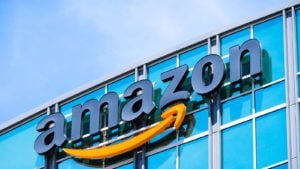On my Atlanta street, blue Amazon (NASDAQ:AMZN) trucks have become as familiar as the mailman. So have the profits rolling into Amazon stock.

Now the largest of the big cloud companies by revenue –beating Apple (NASDAQ:AAPL) – and the second-largest retailer in the world behind only Walmart (NYSE:WMT), Amazon has proven itself during the pandemic as essential infrastructure.
Investors have been richly rewarded for it.
About eight years ago, after tiring of pushback on a finance board from people who said it would never be profitable, I bought some Amazon stock. They have since given me a gilt-edged retirement, with 10x the value they held then. I’m sticking with them.
That’s because Amazon has become a profit machine. It’s due to report earnings Feb. 2. Net income of $7.26 per share is expected on revenue of $120 billion. But there’s a “whisper number” on earnings of $10.45.
Facing Failure
Amazon is now so big it can afford some failures.
A recent Placer.AI report highlights one such failure, Whole Foods. The grocery chain Amazon paid $13.4 billion for in 2017 has suffered grievously during the pandemic. Visits fell by half at the pandemic’s height and were still down 16% in December.
But who cares? Traffic at Amazon’s warehouses was up by 50% in October, thanks to a late Prime Day, and still up by one-third over Christmas, more than making up for it. Amazon has also adjusted, making online groceries part of its Prime service and launching a second grocery chain called Amazon Go.
The same pattern can be seen in another failure, Haven Health. The effort to transform health care, launched with great fanfare alongside JPMorgan Chase & Co. (NYSE:JPM) and Berkshire Hathaway (NYSE:BRK.A, NYSE:BRK.B), is being quietly shuttered. But Amazon’s Pharmacy, fueled by its acquisition of 2018, grows merrily on.
Facing Government
Amazon is less vulnerable to antitrust heat than the other big cloud companies because its revenue streams are so diversified. But it’s still taking it.
Connecticut is looking at its Kindle books. Amazon faces two separate antitrust investigations in the European Union. It’s raising fees in Spain to compensate for new taxes.
The Biden administration is being lobbied to take on Amazon’s treatment of third-party sellers, even while those sellers sell out to larger firms. After announcing a second headquarters in at Arlington, Virginia, Amazon also became the government’s second-largest lobbyist in 2020.
Amazon’s warehouse workers are also agitating for a union, even in Alabama, where that’s usually a fighting word. The warehouses also face more government inspections.
Facing Future
Despite its size, and its leadership in cloud, voice interfaces and infrastructure, Amazon still faces competition.
It’s losing in India to the locally owned Reliance Group, which has government on its side. It’s losing in Latin America to Mercado Libre. It faces a challenge in Southeast Asia from Lazada, backed by Alibaba Group Holding (NYSE:BABA). Local challengers are even showing up in Finland. Walmart hasn’t disappeared, either.
In video, Prime faces new competition from Comcast (NASDAQ:CMCSA), ViacomCBS (NASDAQ:VIAC), AT&T (NYSE:T) and Walt Disney (NYSE:DIS), all of which have launched streaming services.
But Amazon revels in this competition, proof that charges of monopoly are misplaced. Its technology gives it an advantage against all comers. This is especially true in video, where Prime Video is still tied to shipping, and rivals must access customers through its Fire streaming stick.
The Bottom Line on Amazon Stock
Amazon is still growing at 35% per year, at scale. Profitability is only growing. Even at $3,300 per share, Amazon is still a buy. Imagine what it could be with a split and a dividend.
At the time of publication, Dana Blankenhorn owned shares in AMZN, T, BABA and AAPL.
Dana Blankenhorn has been a financial and technology journalist since 1978. He is the author of Technology’s Big Bang: Yesterday, Today and Tomorrow with Moore’s Law, available at the Amazon Kindle store. Write him at danablankenhorn@gmail.com, tweet him at @danablankenhorn, or subscribe to his Substack https://danafblankenhorn.substack.com/.
